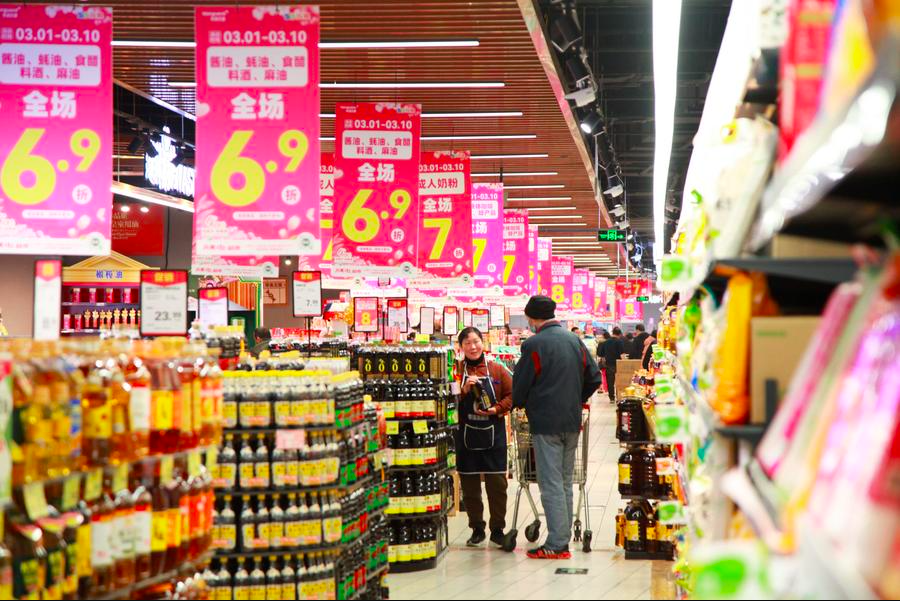
Published 16/07/2024 16:36 | Edited 16/07/2024 17:39
From Monday morning (15) to Thursday (18), the 20th Central Committee of the Communist Party of China (CPC) will hold its third plenary session in Beijing. During the meeting, senior Party leaders will define guidelines for comprehensive reform in China, with significant implications for the country’s economic and social development in the coming years. An official statement will be released after the session concludes.
Xi Jinping, general secretary of the Party and president of China, delivered a work report on behalf of the Political Bureau of the Central Committee. He also outlined a blueprint on comprehensively deepening reform and advancing China’s modernization, as reported by the news agency. Xinhua.
Known as the third plenum, the meeting takes place roughly once every five years and plays a crucial role in China’s reform and opening-up, which began in 1978. This process has underpinned the country’s economic growth over the past four decades. This year’s session will focus on deepening reform and expanding high-level opening-up, promoting China’s high-quality development and modernization, experts said.
Global expectations
Given China’s growing role as a major contributor to global growth, the third plenum has attracted international attention, with expectations of major reform measures in the world’s second-largest economy. In a context of geo-economic tensions, the plenum is expected to provide a sense of continuity and certainty, reaffirming China’s commitment to reform and opening up even as other economies adopt protectionist stances.
Among the main items on the agenda, senior Party leaders will deliberate on a draft resolution of the Central Committee on Comprehensively Deepening Reform and Advancing China’s Modernization, which analyzes new challenges and problems facing the economy and scientifically plans overall arrangements. The draft will serve as a guiding document for comprehensive reform on the new journey.
The plenum is expected to introduce significant reform measures to further develop the system of socialism with Chinese characteristics and modernize the country’s governance system and capacity. Specific measures are expected to boost China’s technological innovation and improve the business environment, fostering new growth drivers for sustainable development.
“As the Chinese economy is transitioning from old to new growth engines, comprehensively deepening reform is crucial to ensuring a stable and smooth transition,” he told Global Times Su Wei, a professor at the Party School of the Chongqing Municipal Committee of the CPC, said that reform and opening up, along with innovation, are the main sources for China’s sustainable development.
Stability and Consistency
China’s long-standing policy of continuing to open up to the world will also be a focus of the plenum, which is expected to boost global development amid geopolitical tensions and protectionism. Experts say China’s stance of deepening reform and expanding opening up will provide stability and certainty for the international community, in contrast to the turmoil in other countries.
Li Haidong, a professor at China Foreign Affairs University, pointed out that while China is committed to modernization and reform, other countries, including the US, are facing internal political struggles and instability. China’s approach will serve as an example for many developing countries, especially in the Global South, that are pursuing their own modernization.
Economic context of the reforms
China’s economy grew 5 percent in the first half of this year, signaling a steady recovery despite internal and external challenges and reaffirming its role as a vital engine of global economic growth.
The country recorded a record high in the trade value of goods in the first half of the year, with a growth rate of 6.1 percent, and secured another bumper harvest of summer cereals. The output of smart and environmentally friendly products such as integrated circuits, service robots, new energy vehicles and solar panels grew at a double-digit rate, cementing their role as new growth drivers.
Domestic demand continued to recover and external demand improved. In the first half of this year, consumer spending contributed 60.5 percent of economic growth, boosting GDP growth by 3.0 percentage points. Gross capital formation, a measure of investment, contributed 25.6 percent of economic growth, boosting GDP growth by 1.3 percentage points. Net exports of goods and services contributed 13.9 percent of economic growth.
In terms of policy support, the effects of large-scale equipment upgrades and policies encouraging the replacement of old consumer goods continued to manifest themselves. Previously issued special-purpose bonds and ultra-long special treasury bonds, policy coordination and comprehensive measures have provided favorable conditions for stable economic operation.
Challenges and adaptations
This growth rate was not easy to achieve, given the growing uncertainty and complexity of the external environment, characterized by geopolitical conflicts and international trade frictions.
The Chinese economy is still in a critical period of recovery as well as transformation and modernization, growing in waves amid upheavals. The performance of the first half of the year illustrated this. The second quarter saw GDP growth of 4.7 percent year-on-year, down from 5.3 percent in the first quarter.
Extreme weather conditions and flooding contributed to the second-quarter decline, which also reflected increasing difficulties and challenges in current economic operations, such as insufficient domestic effective demand.
From a medium- to long-term perspective, the trends of China’s stable economic operation and sustainable improvement remain unchanged. The transformation to cutting-edge, intelligent and green production is progressing solidly, fueling new industries and new growth drivers.
Innovations and future
There have been improvements in energy security support capabilities and industrial and supply chain resilience. New technologies such as big data and artificial intelligence have created new consumption scenarios. Self-sufficiency in science and technology has continued to improve, injecting new impetus into the development of new quality productive forces.
However, reforms are essential for the high-quality growth of the Chinese economy. The third plenary session of the 20th Central Committee of the Communist Party of China will mainly examine issues related to further deepening reform and advancing China’s modernization.
Innovative and dynamic reforms are expected to further consolidate consensus, emancipate and develop productive forces, and improve social dynamics. Efforts to further deepen reform at all levels will continuously provide strong impetus and institutional guarantees for China’s modernization.
Source: vermelho.org.br

